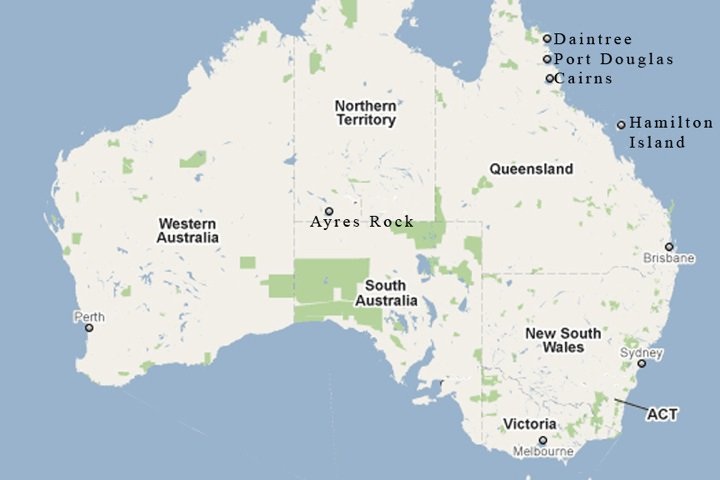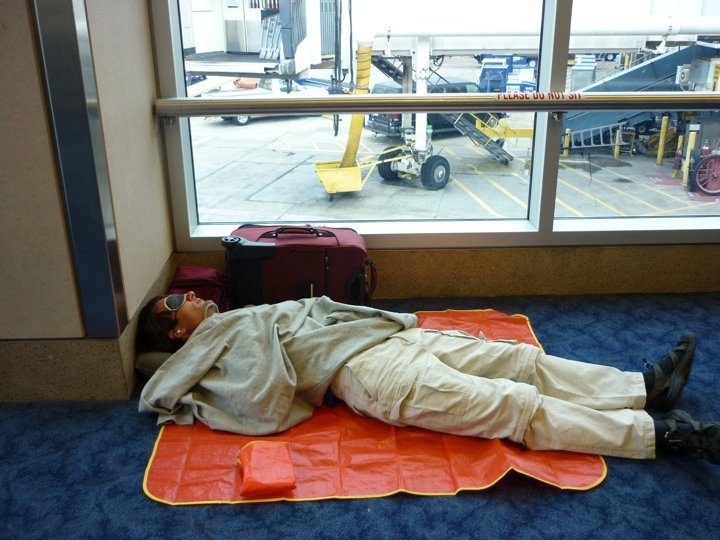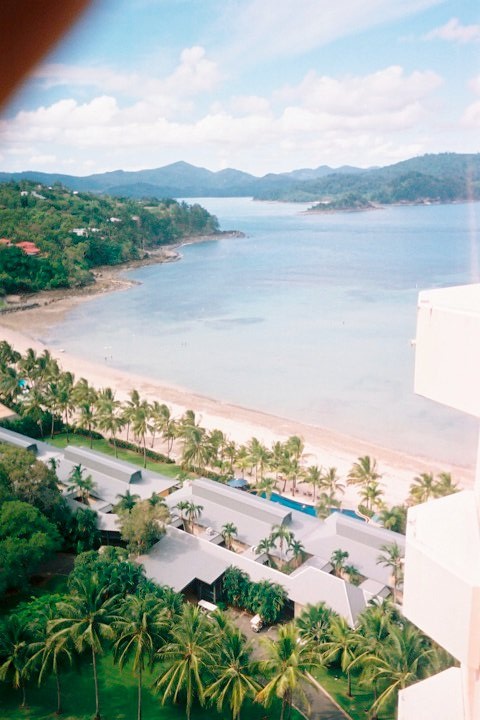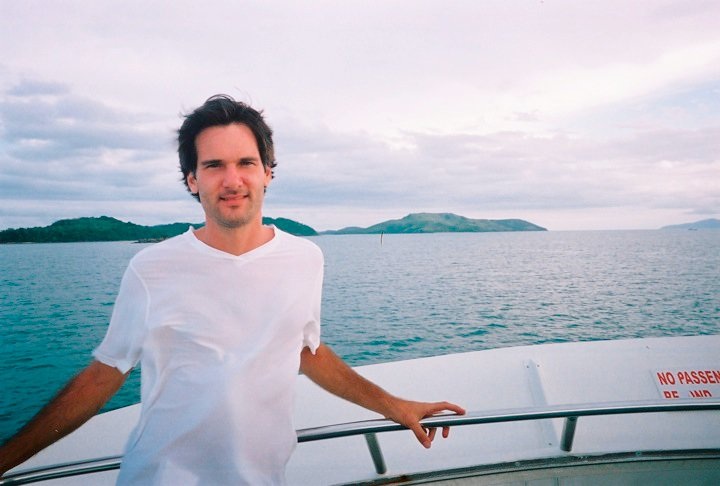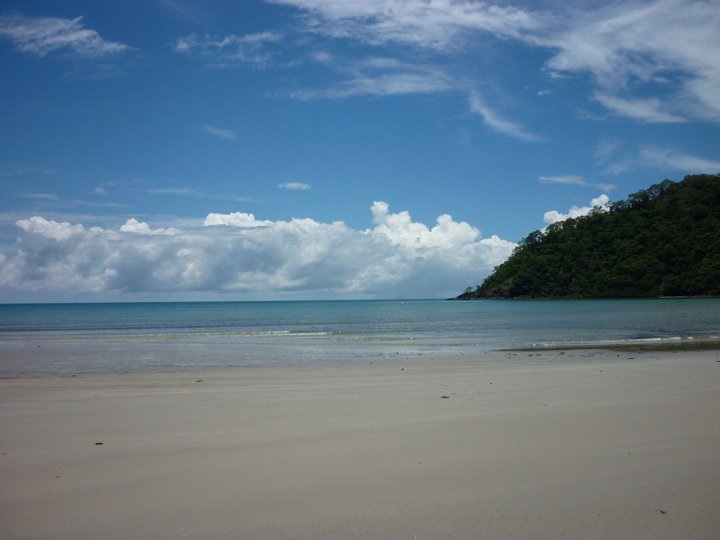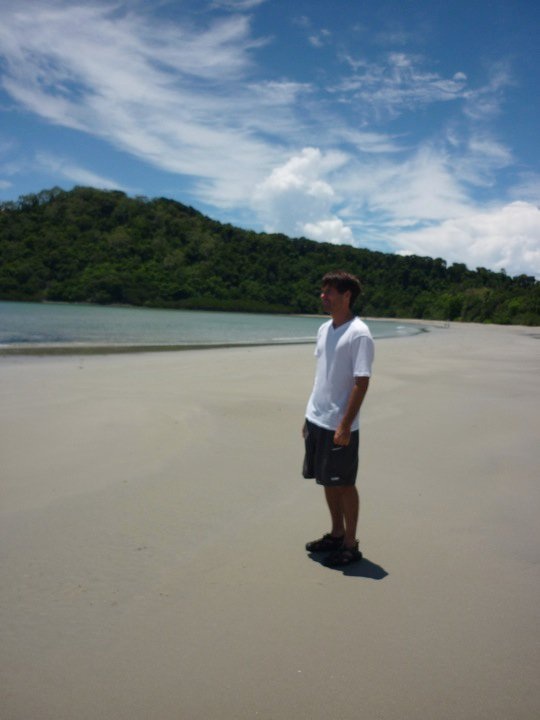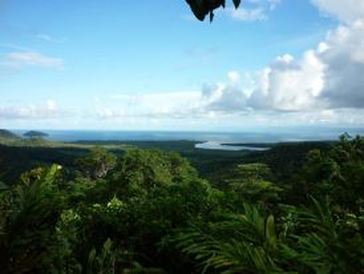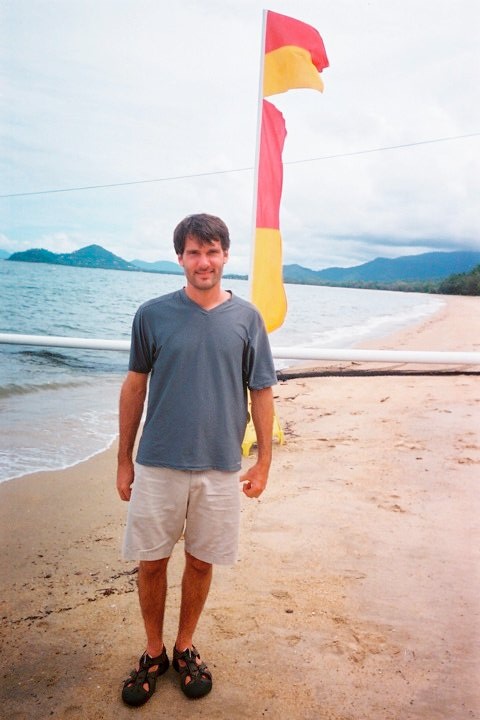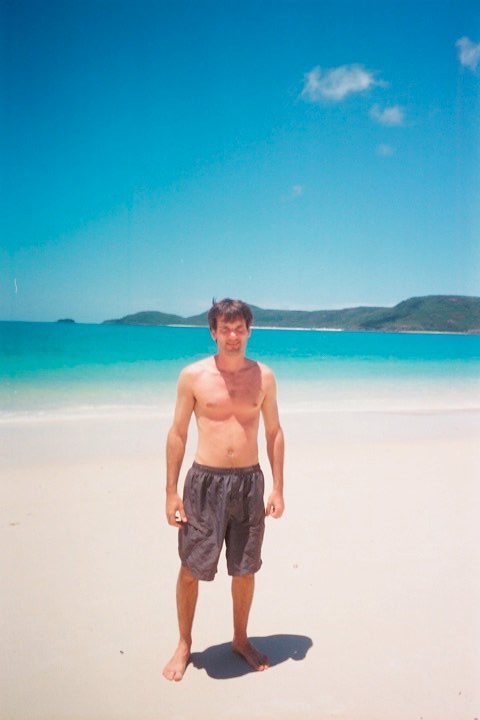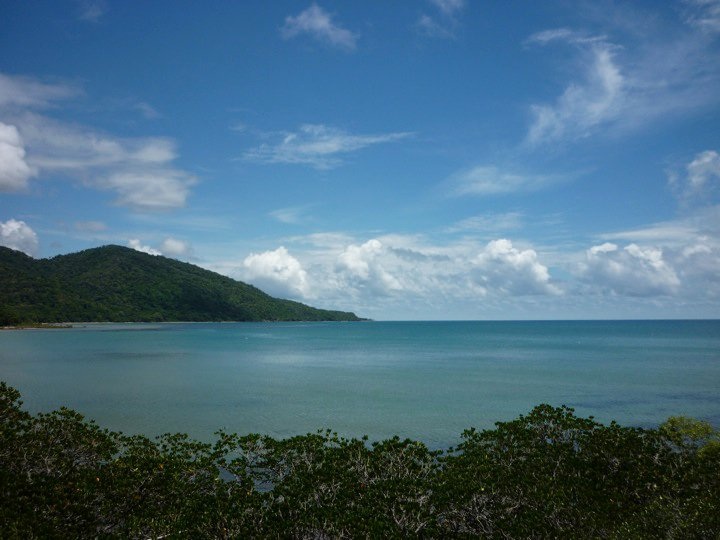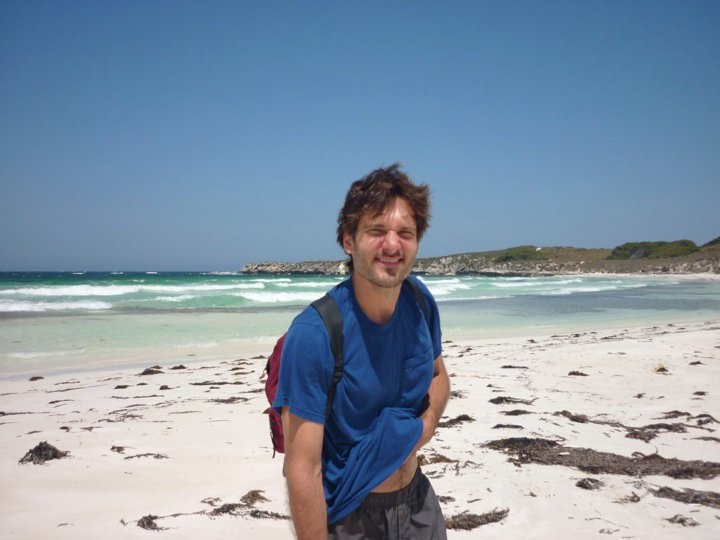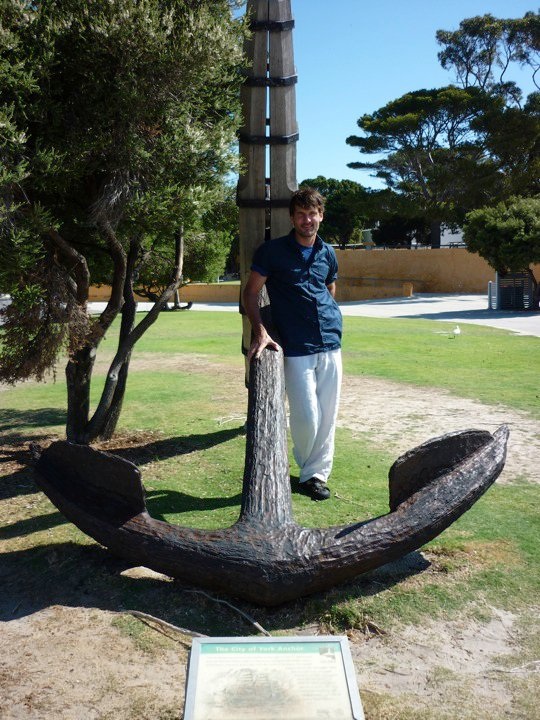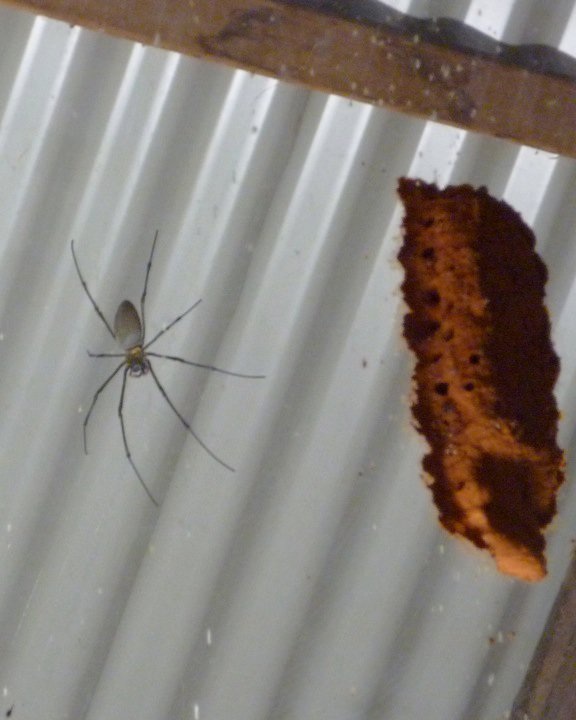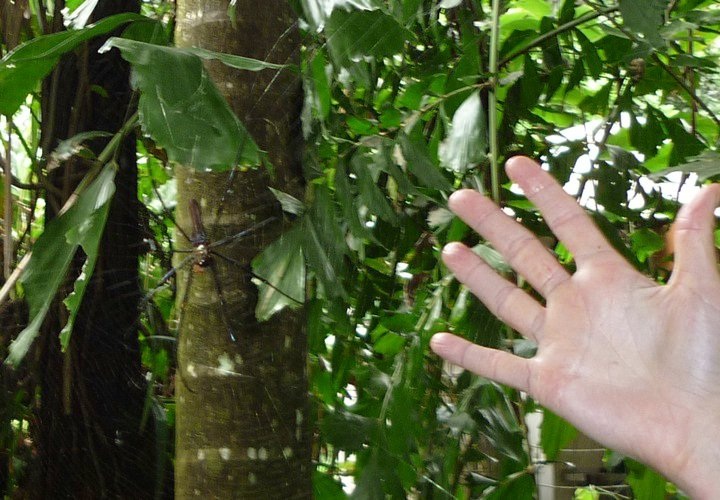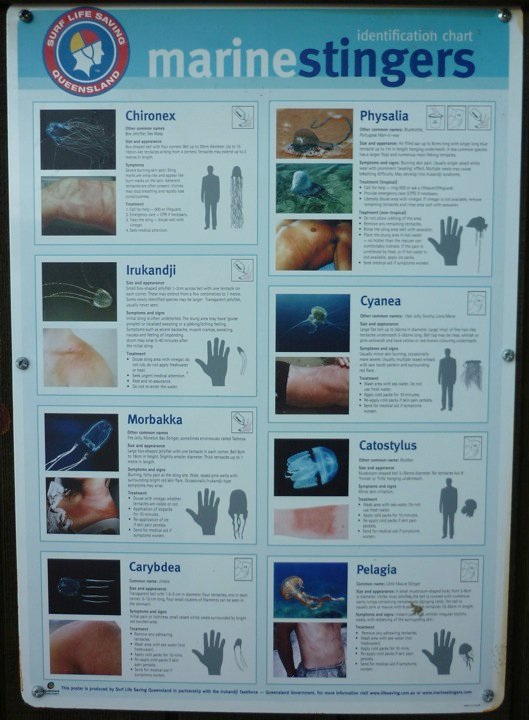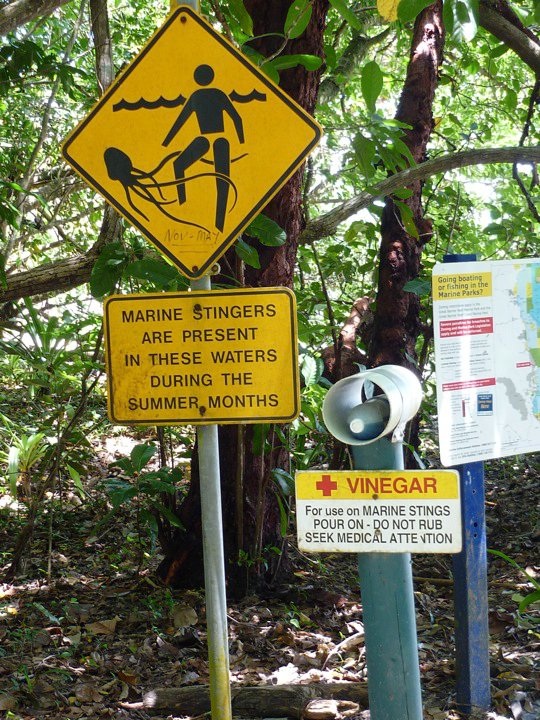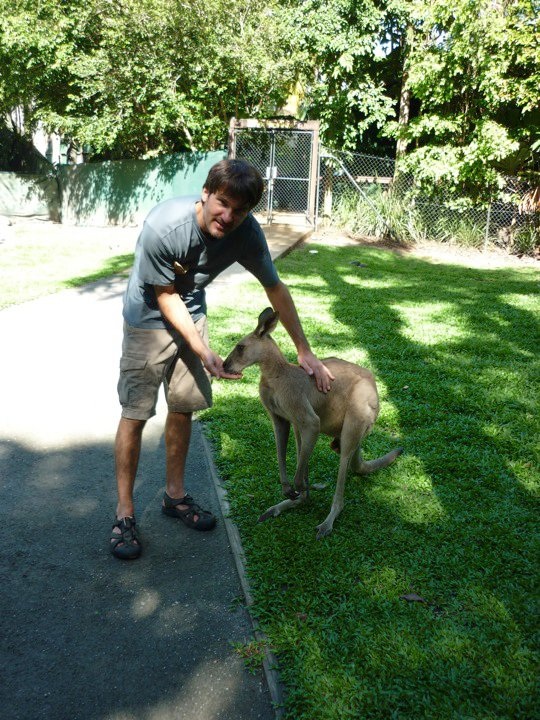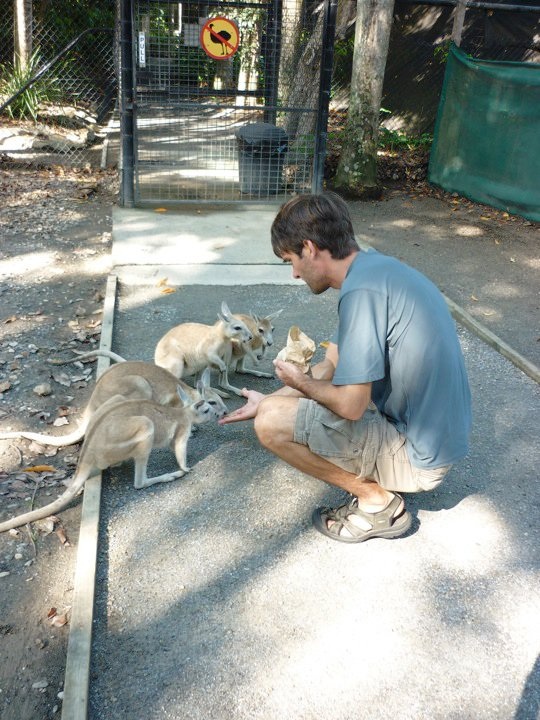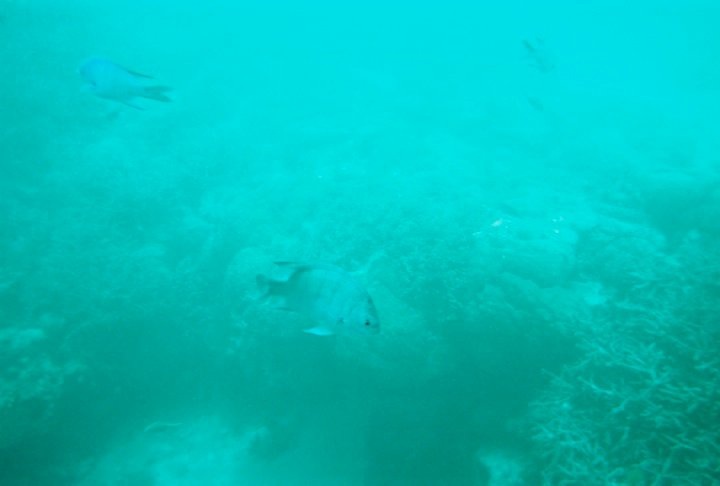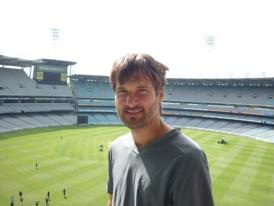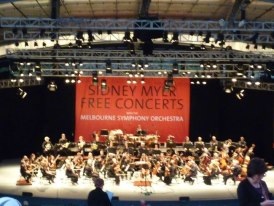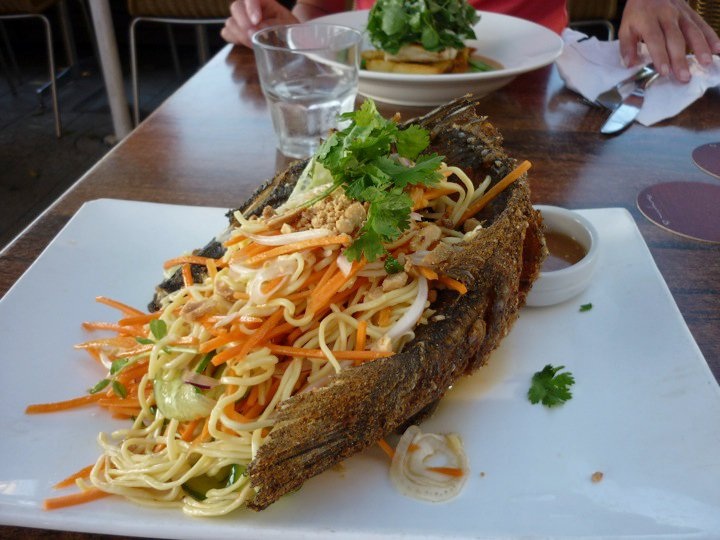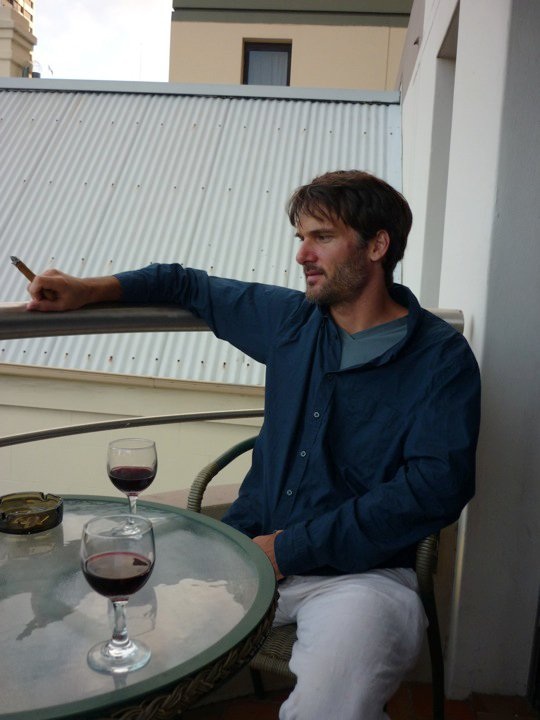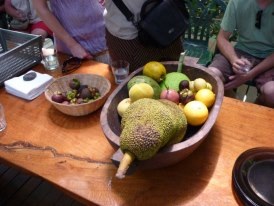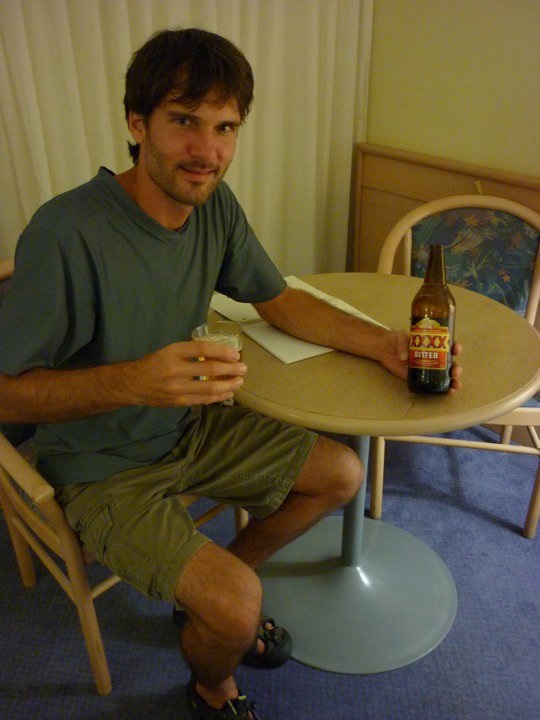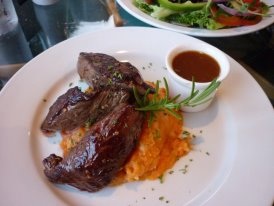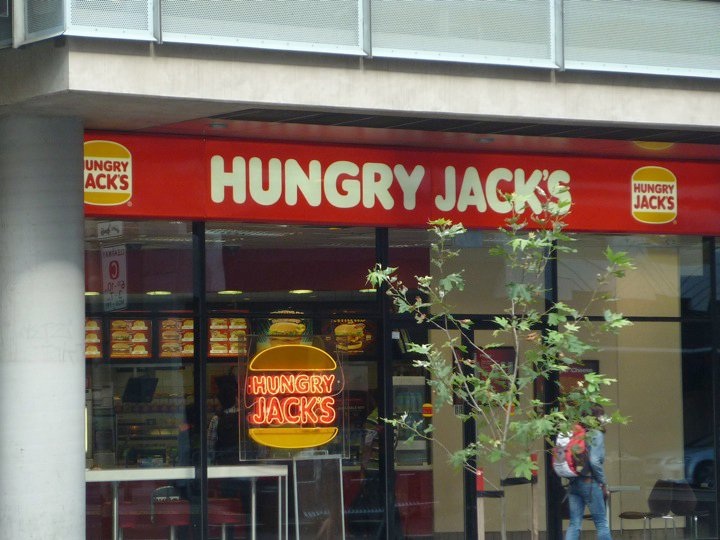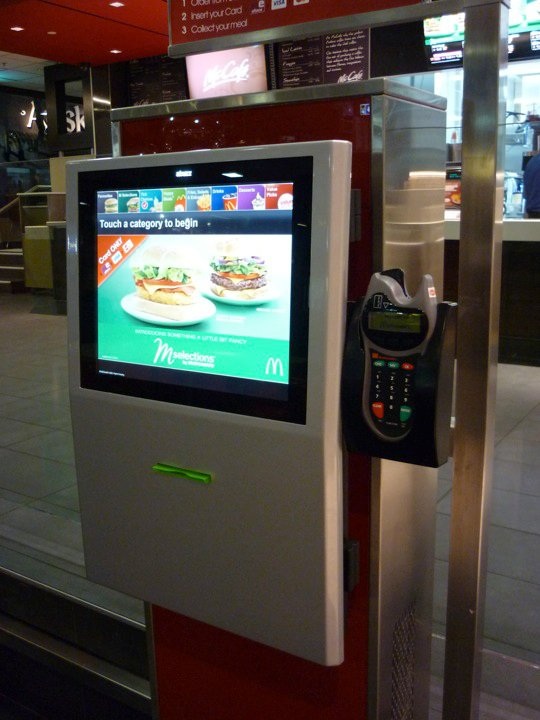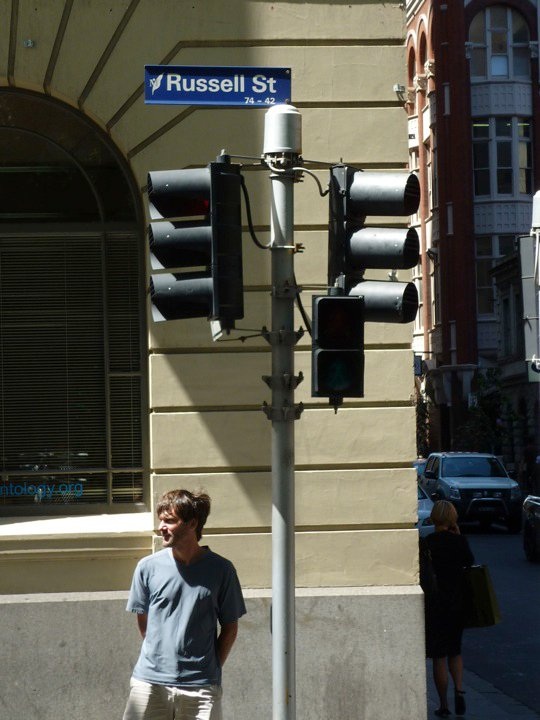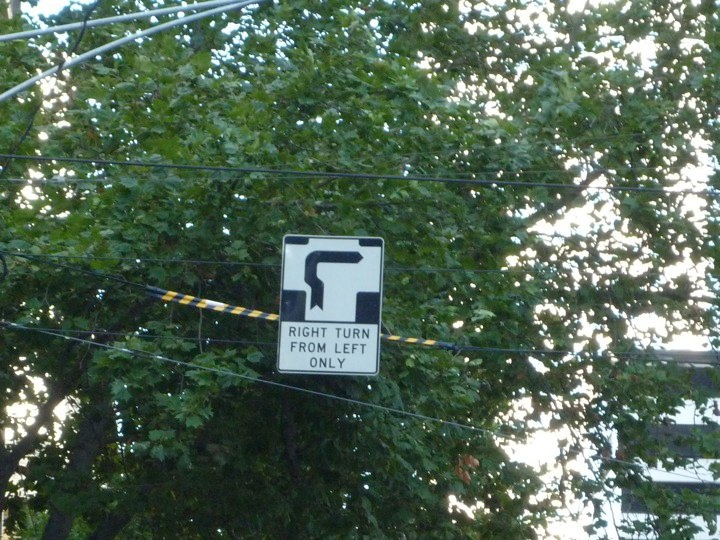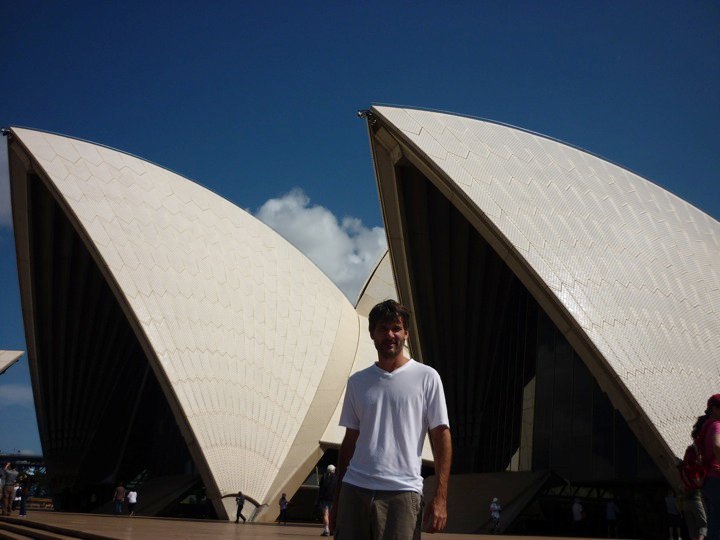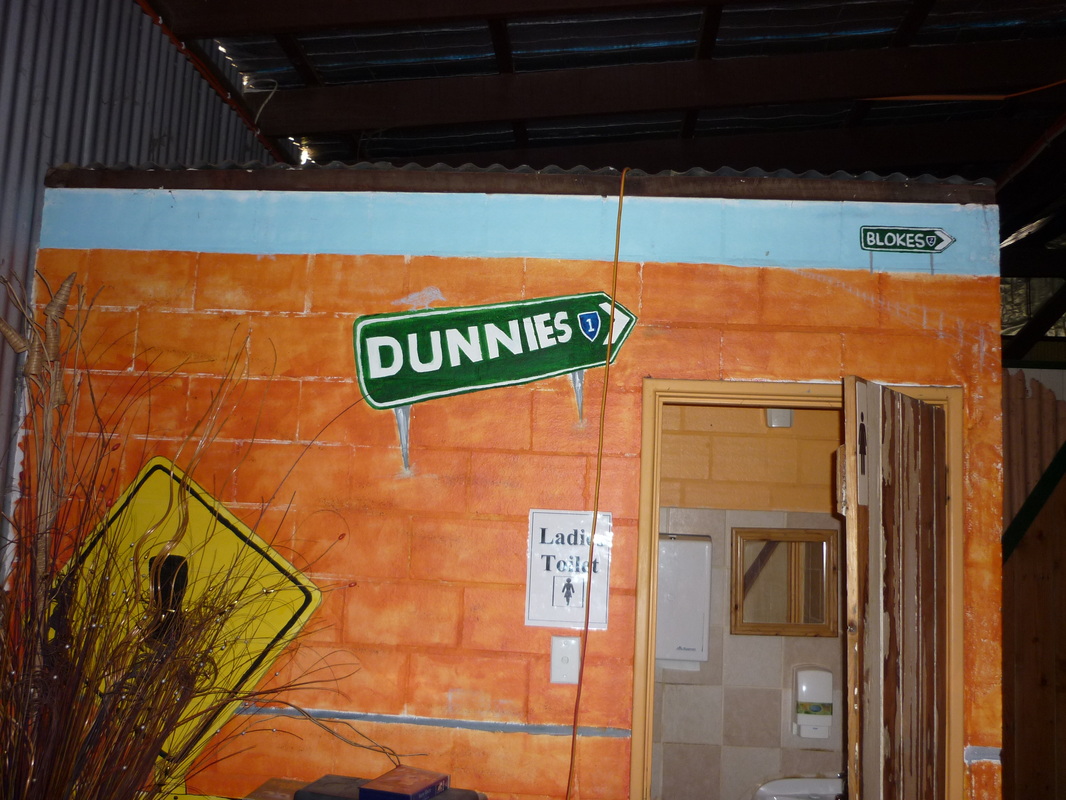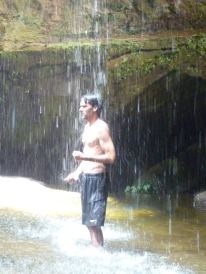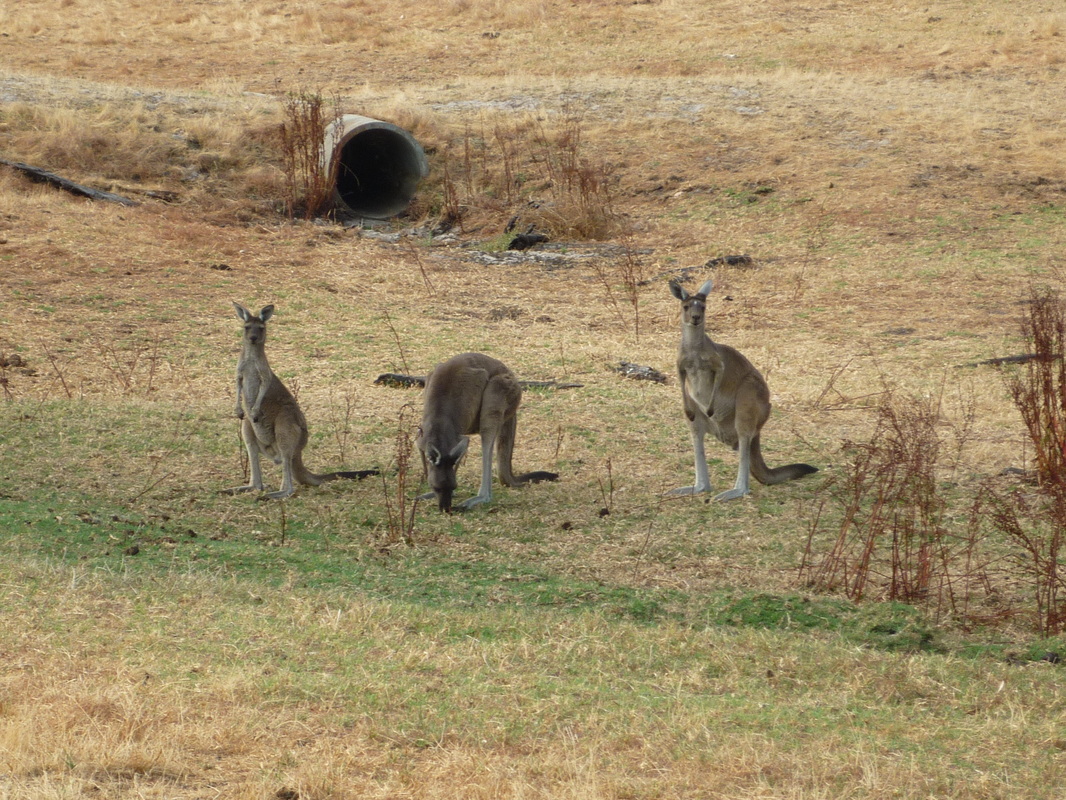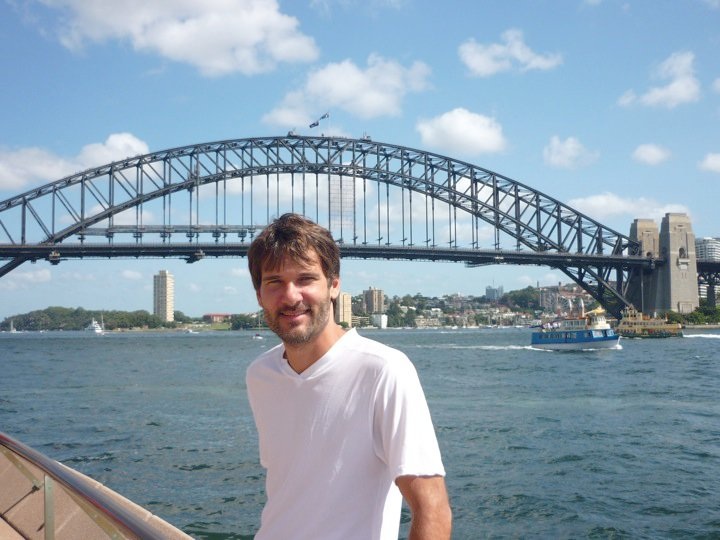Summer in February in Australia
Our flight to LAX on Monday, February 1, 2010 left Austin around 5pm, Central Standard Time. The flight to Brisbane (pronounced “Bris-bin”) from LA left Monday at 11:50pm Pacific Standard. Tuesday was entirely experienced on the Airplane as an 8-hour day, but to the body Monday + Tuesday seems like a single 32-hour day, which gives you 8 additional hours to your coming days; this is the easy direction to fly. Accounting for jet lag, we went to a city that was 8 hours behind Austin, but a day later. This meant that when we arrived on Wednesday and beyond, our body naturally woke us up early in the day to experience the most daylight, and we could easily sleep in with this 8-hour buffer if we were willing to find something to do when our body wakes us up shortly after the sum comes up in summer on the Whitsunday Islands, which is easy.
Coming back to Austin 24 days later was the opposite jetlag experience. Even though we gained a day due to the dateline, to our body, we were shorted 8 hours, so to catch up you have to go to bed earlier so you don’t sleep in too late. The first day back, we slept until 2 the next day. Adjusting the other way means forcing yourself to get up earlier over time rather than staying up later and sleeping in later at the beach.
Coming back to Austin 24 days later was the opposite jetlag experience. Even though we gained a day due to the dateline, to our body, we were shorted 8 hours, so to catch up you have to go to bed earlier so you don’t sleep in too late. The first day back, we slept until 2 the next day. Adjusting the other way means forcing yourself to get up earlier over time rather than staying up later and sleeping in later at the beach.
We arrived in Brisbane around 6am Wednesday morning. A plane to Hamilton Island around noon deplaned in the outdoor sun paradise of Hamilton Island, and we were whisked into our driver’s 6-man golf cart that took us to our room. A porter later delivered our luggage of 2 bags that were deemed “carry-on” for American Airlines, but which Qantus made us check on their flights, due to their weight of over 7 kg (they didn’t charge for carry-ons, and gave us free meals and food on their flights). I threw the porter a 2 dollar gold piece and he chuckled, realizing I was a silly Austinite that tipped. I was later told by a restaurateur that didn’t have the write-in tip on his credit card reader that “we don’t roll like that here” on the tipping. When you swiped your credit card at the readers, the machine asked if it was a credit or debit, pin or signature, and most had a +tip on the signature.
Our trip built from the smallest “city” of Hamilton Island to a tourist town of Port Douglas to a small city of Cairns (pronounced “Cans”) to the West-Coast-Styley of the Perth/Freemantle/Rottnest Island, a larger “metro area.” Then Melbourne (pronounced “Mel-bun”) was still bigger than all the others and Sydney was on the scale of New York, London, or Paris.
We started the trip chill by checking into the Beach Club Hotel over fruit juice and pastries, and went to our room where we spent 5 nights. It was by far the best hotel of the trip. It was rated (rating system unknown to me, but I’d agree) 5 stars. You could lie in bed and with a gorgeous paradise view of the Whitsunday Islands, and if necessary a pull-out TV. We were on the 2nd floor (there were only 2) or you could chill from the first floor in the grass backyard. Breakfast was served daily which included unlimited fruit tarts on the weekends, constant croissants, pain au chocolat, toast, pastries, cereal, tea or coffee (which was not drip coffee, but the European espresso machine variety with cappuccino, prevalent throughout Australia as in Europe (an Englishman reminded us on the way that Europe did not include Great Britain). For the main course of breakfast, you could select from an assortment of egg dishes, which favored “poached eggs”, a technique I have yet to try in my cooking, but will soon. I usually ordered my eggs with broken yolks. They also had other options for breakfast.
Our trip built from the smallest “city” of Hamilton Island to a tourist town of Port Douglas to a small city of Cairns (pronounced “Cans”) to the West-Coast-Styley of the Perth/Freemantle/Rottnest Island, a larger “metro area.” Then Melbourne (pronounced “Mel-bun”) was still bigger than all the others and Sydney was on the scale of New York, London, or Paris.
We started the trip chill by checking into the Beach Club Hotel over fruit juice and pastries, and went to our room where we spent 5 nights. It was by far the best hotel of the trip. It was rated (rating system unknown to me, but I’d agree) 5 stars. You could lie in bed and with a gorgeous paradise view of the Whitsunday Islands, and if necessary a pull-out TV. We were on the 2nd floor (there were only 2) or you could chill from the first floor in the grass backyard. Breakfast was served daily which included unlimited fruit tarts on the weekends, constant croissants, pain au chocolat, toast, pastries, cereal, tea or coffee (which was not drip coffee, but the European espresso machine variety with cappuccino, prevalent throughout Australia as in Europe (an Englishman reminded us on the way that Europe did not include Great Britain). For the main course of breakfast, you could select from an assortment of egg dishes, which favored “poached eggs”, a technique I have yet to try in my cooking, but will soon. I usually ordered my eggs with broken yolks. They also had other options for breakfast.
|
A view of our hotel
|
Through the trip we traveled by many means. From Hamilton Island, we took ferries to Reefworld (on the reef), and Whitsunday Island. We also took a ferry from Freemantle to Rottnest Island, and a boat through Sydney harbor. It was golf-cart escort on Hamilton Island and driving left-handed stick-shift on the left with roundabouts in the northeast of Queensland (but didn’t drive the right-turn-from-left-lane laws in Melbourne). It was a train from Perth to Freemantle and around Sydney, while trams took us through Melbourne. Of course, we logged over 20,000 miles in the air as well, and a bunch of miles hiking and walking through islands, towns, and cities. There was even bicycling on Rottnest.
|
On that first day of Wednesday, we alleviated jetlag by hiking to the highest peak of the Whitsunday islands at Passage Peak. It was easy to adjust over time via “early to bed early to rise” except for Friday night when there was a guy playing solo piano at the hotel across the street. I jammed “Life Goes On” and one or two with him on the piano, but he was playing things in a different key to fit his voice. Other than a few weekends on our trip, we maintained “early to bed and early to rise.”
The islands and beaches we visited were awesome. Hamilton Island’s “Beach Club” had a beach (no beach is private, but the chairs are with the hotel). There was also a nice pool that looked on a parallel plane with the sea. Out in the sea were several islands including the large Whitsunday Island. We visited the silicate-sand (as opposed to coral-sand) beaches of Whitehaven beach on Whitsunday Island. Whitsunday, like many other Whitsunday Islands is an uninhabited national park.
|
The weather through our entire trip of summer in February was amazing, except for the last night in Sydney when we went to the observatory but had to settle for a demonstration instead of a stargazing due to clouds. In the islands and on land in Cairns and Port Douglas, it was clear, sunny, and hot with temperatures between the upper 70’s and low 90’s during the day. In the rainforests of Daintree, north of Port Douglas, it was humid. When we left the northeast of Australia in the way to Perth, we’d experienced the dry weather of Ayres Rock Airport (and outdoor-plane loading experience and some persistent flies) and reached the west coast of Perth, where it was hot, sunny, and dry. Rottnest was like Aruba, and Melbourne was a bit cooler, but still warm temperatures, while Sydney was warm and sunny (except for the last day of clouds).
|
|
On the west coast, we were on Rottnest Island (bicycles only, no golf carts allowed), which had its fair share of beaches out in the Indian Ocean off of Perth. In the northeast of Queensland, we walked along the beaches between Daintree and Cairns and along the “esplinades” in Cairns, Port Douglas, and Perth.
|
|
In Australia, the wildlife abound. In the sea, there lived several varieties of jellyfish that can range from a tiny imperceptible sting to one as bag as a man that could kill a man in seconds. One of those in between was the Iridjucki sp? which was rather rare though known to occur and kill a small number of people, but likely wouldn’t kill you (though it would inflict lots of pain). Combined with the direct sunlight of summer in the northeast of Australia, it was preferable to war a stinger suit. It protected you from the sun and the minor or possibly major inconvenience of a jellyfish sting. One that covers your hands and includes a hood as an option is preferable if you demand maximum protection from sun and stingers.
|
They had these jellyfish net swim-zones for swimming in the northeast of Queensland. Without stinger suits (which were only suggested in the summer of the North-East of Australia), we swam on Rottnest Island off of Perth and at Bondi Beach in Sydney. Both times, got lots of sun I do think I might have touched a harmless jellyfish school on the reef (had a stinger-suit) and also swimming on one of Rottnest’s pristine clear water north shore beaches without one. The rough beach on the south of Rottnest faced Antarctica so the waves and current was pretty heavy-duty. The western tip had nothing but ocean from there to the east coast of Africa. The north end was pristinely clear water.
The wildlife was not only in the sea, but on land. Near the Beach Club lived a wallaby, a small kangaroo-like animal. We pet and fed kangaroos and wallabyes; witnessed koalas, the flightless Emu and ??roadkill bird?? at the ??Port Douglas rainforest café?? In the Swan Valley, we stopped at a dude’s backyard that hat many kangaroos abound.
Wildlife was in the air at the Beach Club. The resident cockatoos hung out on the backyard palm trees and foliage and would gladly come up to your balcony to party with you. It was suggested not to feed the animals, but they helped themselves. One day, housekeeping left the doors ajar to the balcony and one broke a brand-new sealed bag of nuts to grab some goodies inside. Apparently, he could see the bag and know that although sealed, inside was the prize. I was able to salvage the rest of the bag he’d left behind and have it for the cities ahead of me. The hotel hooked us up with a bottle of champagne when I’d formally “filed the complaint.” Sweet.
Wildlife was in the air at the Beach Club. The resident cockatoos hung out on the backyard palm trees and foliage and would gladly come up to your balcony to party with you. It was suggested not to feed the animals, but they helped themselves. One day, housekeeping left the doors ajar to the balcony and one broke a brand-new sealed bag of nuts to grab some goodies inside. Apparently, he could see the bag and know that although sealed, inside was the prize. I was able to salvage the rest of the bag he’d left behind and have it for the cities ahead of me. The hotel hooked us up with a bottle of champagne when I’d formally “filed the complaint.” Sweet.
The other wildlife in the air besides the flies and cockatoos are the bats that live throughout Australia. They were not the small variety as seen in under Austin’s Congress Ave bridge 1.5 Million strong, but the big “old school batman logo” ones called “fruit bats” that would eat fruit from the trees throughout the places we’d been. Catching the flies are the huge spiders.
|
On the reef, we witnessed some fish characters. Wally was the resident “man” of the big fish. When Wally goes down a female will replace him and turn into a male to mate with the others in the group. There was a small fish that would swim up to you in a threatening manner if you came in his “territory” which was a small patch of space in between some rivals. We saw some huge clams in addition to great coral reef. It was an underwater plateaus and underwater islands that are alive. There was also reef and fish schools outside the hotel at the Beach Club (included run-down snorkeling equipment free of charge). The equipment at reefworld was much better
|
Sports abound. We were able to catch the exciting half of the Super Bowl that resulted in the Saints winning their first. The West Indies Cricket Club was visiting the Australian Club and touring the country, seemingly at the same time that us and AC/DC (one Ozzy called it “Ack-a-Dack-A”) that summer if February. We were able to catch some olympics in the morning and before bed from the hotels. Freely on the television was rugby and Australian rules football, and cricket matches.
We visited the Melbourne Cricket Grounds. Cricket is similar to baseball, but the pitcher (called “bowler” is trying to knock down the “wickets” and the batter is trying to either slam it or block it, but not have someone catch it from his bat. The Australian team was warming up throwing around rugby balls and Australian footballs on the oval. The oval is an oval grass playing field that is 180 meters wide at its longest and roughly 135 wide in the middle. For cricket, they put in a “wicket” in the center, which is a small rectangle like between a pitcher and catcher. At each end are the “wickets” or what else they called?. In the winter, they put up vertical goal posts at the edges for a game invented to give cricket players something to do in the winter – play Aussie football. The game is awesome and looks fun to play. The goal is to kick the ball between some vertical goal posts (no crossbars, and there are 3 goals with the middle one being worth 6 points and the edges worth 1 point). To get there, you can “soccer” the ball (they call soccer “soccer” in Australia), but also run with it up to 15 meters. Within 15 meters, you can either bounce it, pass it (by hitting it like a volley ball), punt it, or dropkick it. If you punt/kick it over 15 meters without a bounce and someone catches it, play is stopped for the “mark.” At that point, the person that has the ball can resume play by either kicking it (hopefully through the goal, but alternatively to someone else), running with it, passing with it, or bouncing it on the ground (or touching it to the ground). The tennis courts in Australia are generally Astroturf courts.
We visited the Melbourne Cricket Grounds. Cricket is similar to baseball, but the pitcher (called “bowler” is trying to knock down the “wickets” and the batter is trying to either slam it or block it, but not have someone catch it from his bat. The Australian team was warming up throwing around rugby balls and Australian footballs on the oval. The oval is an oval grass playing field that is 180 meters wide at its longest and roughly 135 wide in the middle. For cricket, they put in a “wicket” in the center, which is a small rectangle like between a pitcher and catcher. At each end are the “wickets” or what else they called?. In the winter, they put up vertical goal posts at the edges for a game invented to give cricket players something to do in the winter – play Aussie football. The game is awesome and looks fun to play. The goal is to kick the ball between some vertical goal posts (no crossbars, and there are 3 goals with the middle one being worth 6 points and the edges worth 1 point). To get there, you can “soccer” the ball (they call soccer “soccer” in Australia), but also run with it up to 15 meters. Within 15 meters, you can either bounce it, pass it (by hitting it like a volley ball), punt it, or dropkick it. If you punt/kick it over 15 meters without a bounce and someone catches it, play is stopped for the “mark.” At that point, the person that has the ball can resume play by either kicking it (hopefully through the goal, but alternatively to someone else), running with it, passing with it, or bouncing it on the ground (or touching it to the ground). The tennis courts in Australia are generally Astroturf courts.
On the television (which featured cheeky commercials such as a lady rolling into a Yoga session and making jokes about taking a shit and how regular she “just went” before class and the Yoga teacher needed some cereal cuz he had a stick up his ass and seemed uptight when she showed up so boisterously.
Fresh food abound in Australia. We had a fruit tasting up the street from the last non-off-road street at Daintree. It featured 10 fruits, many of which were “exotic” (meaning not native to Australia) but grown locally. Australia had lots of restaurants from all around the world. From fish and chips pubs to Chinese to Japanese to Steakhouses to Indian places to Italian joints.
Authentic and quality Italian pasta and pizza is everywhere. We visited lots and they were all good. Brief reviews of notables.
Fresh food abound in Australia. We had a fruit tasting up the street from the last non-off-road street at Daintree. It featured 10 fruits, many of which were “exotic” (meaning not native to Australia) but grown locally. Australia had lots of restaurants from all around the world. From fish and chips pubs to Chinese to Japanese to Steakhouses to Indian places to Italian joints.
Authentic and quality Italian pasta and pizza is everywhere. We visited lots and they were all good. Brief reviews of notables.
|
Fresh local alcohol also abound. In Queensland, I enjoyed their XXXX Bitter. We visited microbreweries in the Swan Valley outside Perth of which there was a great variety. We also spent a day at wineries in the Yarry Valley outside Melbourne. Finally, we took a morning tour of Australia’s large Carlton macrobrewery in Melbourne. The brewery makes Carlton draft which is better than VB (Victoria Bitter) which is better than Fosters. Carlton Dark is better than all those. They are all brewed at the same place. The beer in Australia is all around very good. We also found a winery in the Yarra valley that made great alcoholic apple cider.
|
Kangaroo
|
We enjoyed the arts on our trip to a great deal. One night in Perth, we walked through the botanical gardens and there happened to be a Western Australia Symphony show that night and someone gave us free tickets. It included Barbara Bonnie and her sidekick doing opera singing. In Melbourne, we saw the Melbourne Symphony Orchestra do a show for free in the park. We saw a play called “Grace” in Freemantle which went in depth about Australian culture, including a discussion of white and aboriginal culture… but it was also a stalker thriller. It was part of the Perth arts festival.
|
Restaurants are generally open separately for lunch and dinner with a break in the afternoon, though you can find lots that are open all day, and most places when opening for dinner open earlier than in Europe (usually 5 or 5:30). As for fast food, of which I didn’t partake, Australia has kiosks at McDonalds so you can order without human interaction. Also, Burger King is called “Hungry Jack’s” but they have the same logo as BK with the words in a yellow bun. As for smoking, it is pretty much not done nearly as much as in Europe and only our hotel in Sydney allowed smoking on the balcony, where I enjoyed Cuban cigars and Yarra Valley wine.
|
As with comparisons and contrasts with England’s English, there are some differences between Australian, English, and American English. Guys are blokes, gals are sheilas, friends are mates, baby strollers are prams, the bathroom is the dunny (or the toilet or maybe the loo). The culture of the Aussies is definitely “green.” They are generally big on recycling, most of the toilets have the 2 buttons (there are usually men’s troughs that are only flushable by someone turning on a spigot (called something else). However, you can’t drink on the streets in Australia anywhere (though exceptions apply during some events in certain places, such as the park).
Copyright © 2013 RED
